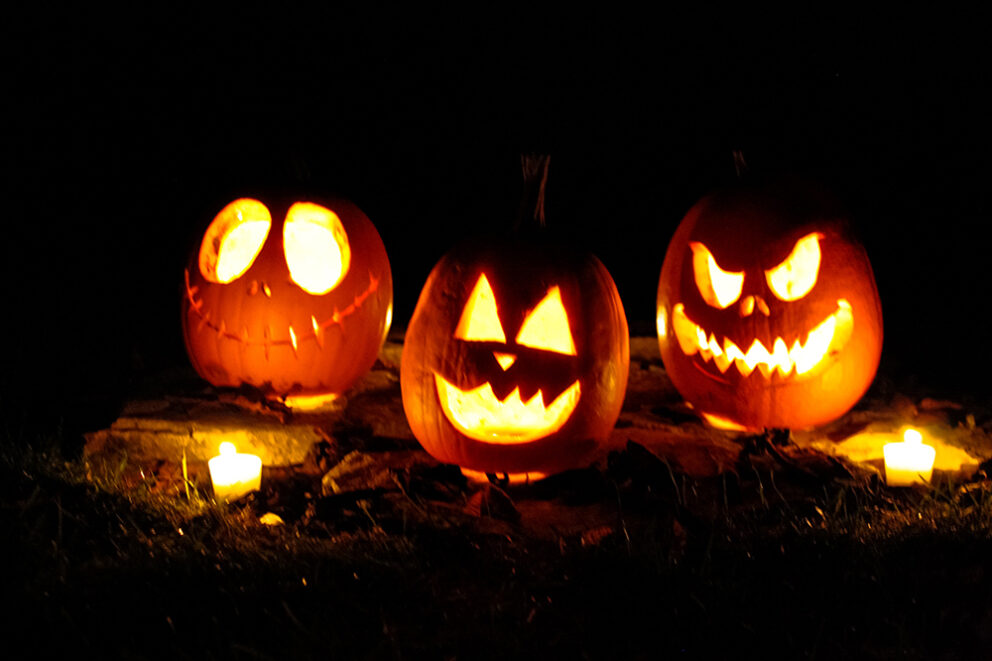For those who celebrate Halloween, the images can bring many things to mind: pumpkins, costumes, fall leaves, and of course, candy. It’s also a time when we’re bombarded by images of death: headstones, skeletons, ghosts. Some houses really amp up the gore in their decorations, with hanging skeletons, arms and legs reaching out of the ground, corpses in caskets, and other images which can be extremely disturbing to those newly bereaved. For grieving children and families, the Halloween decorations and costumes can be a trigger for the loss they have experienced.
What do grieving children fear? A lot of things. Who will die next? How will we live without the person who died? Who will take care of me? Where do people go after they die? And, most especially, will I die too? Some children will have fears about places or circumstances related to the death. They might get nervous or uncomfortable when they encounter these reminders (driving by the hospital, hearing a fire truck siren, going to the doctor). Night time can also bring up a lot of worries and fears. This might look like having difficulty falling asleep or waking up with nightmares. Some children might want to sleep in the same room or bed with their parent or siblings. For those who are okay sleeping by themselves, they might need additional comforts like leaving a light on, the door open, or a special stuffed animal to hug.
If you know a child or teen who is dealing with fears and worries after a death, here are some ways to help:
Listen: It’s natural to want to reassure children and take away their fears, but it can be more helpful to start with listening to and acknowledging their worries. If you want to offer reassurance, do so without making promises that can’t be kept. A common example is a child who is worried that you or someone else will die too. Rather than say, “Don’t worry honey, I won’t die,” it’s more helpful to say something like, “I know you’re worried about other people dying too. While everyone does die, I plan to take good care of myself and to be here for a very long time. If something were to happen to me, there will always be someone to take care of you.”
Provide information: Often fears and worries are rooted in a lack of knowledge. Ask children and teens if they have questions about the death or the person who died. Answer honestly, in language they can understand. You can also ask them what they think or what they have heard from other people. Sometimes just having the details they’re wondering about will help lessen their fear.
Ask what they need: Children and teens often know what they need, but may not feel like their ideas are valid or worthy. If a child gets scared when a fire truck goes by, start with acknowledging: “When the fire truck goes by, you get scared and cover your ears.” Then you can ask what they need: “When you get scared about the fire truck, what do you think would be helpful? What could I do to help you feel safe? What could you do to help yourself feel safe?”
Establish routines: Consistency and predictability go a long way towards helping children and teens feel safe after a death. Routines around going to bed, meal times, school, and activities can provide a structure that is reassuring. While routines are helpful, it’s also good to remain flexible and allow for things to shift and change when needed.
Offer choices: When someone dies, children and teens, as well as adults, often feel powerless and out of control. Providing choices helps to rebuild a sense of control over their lives and lessens their fears about the world being unsafe. These choices can be as small as, “Which of these two cereals do you want?” or as big as, “Would you like to attend the memorial service?”
Here is a craft activity that children might find helpful, especially when it comes to having fears about going to sleep:
Power Shield: Cut a piece of cardboard into the shape of a shield. Divide the shield into sections. Ask the child what colors, shapes, words and objects that help them feel safe. Fill in each section with a color or image that represents power for the child. The shield can be hung above the bed, placed under, or anywhere else that the child feels it will bring them the most support.
